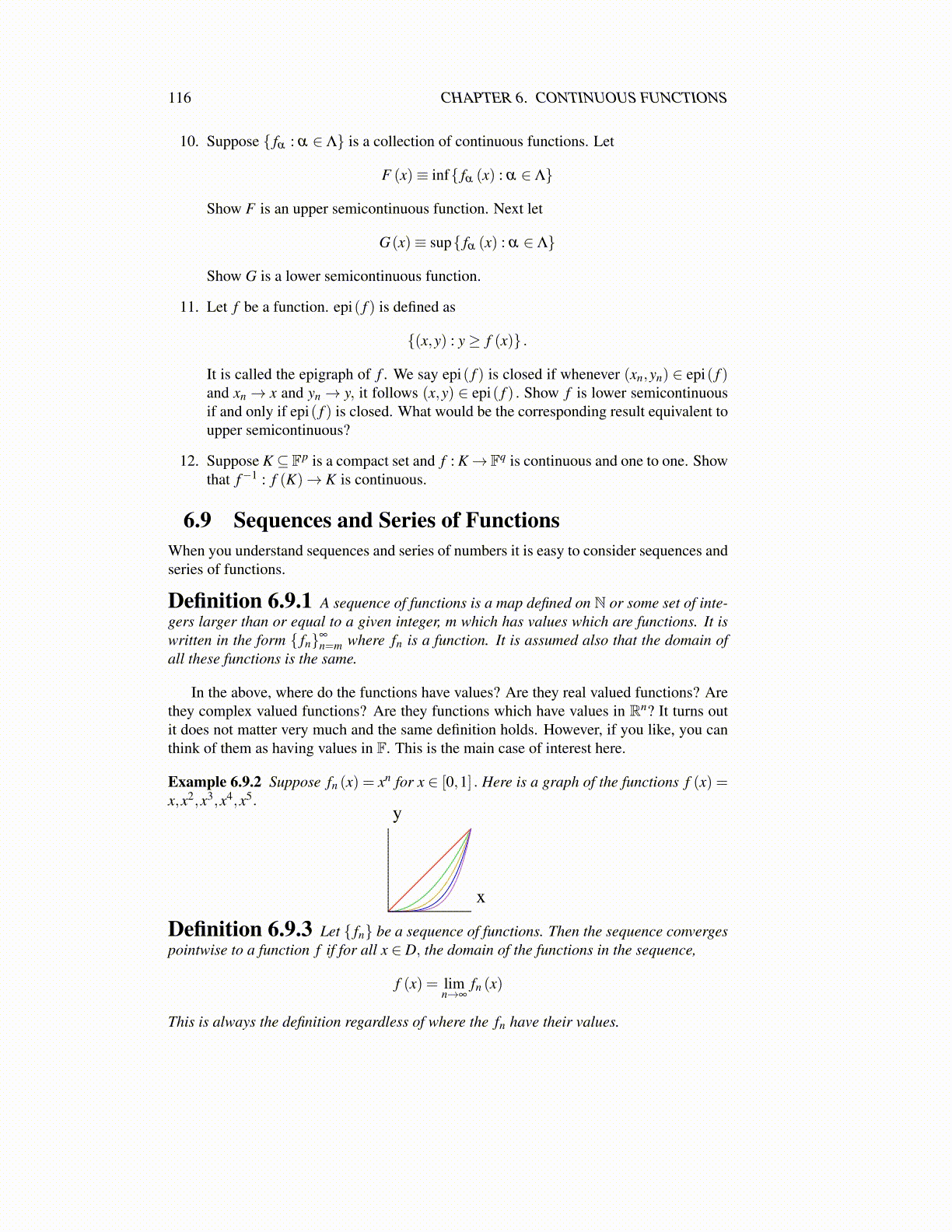
116 CHAPTER 6. CONTINUOUS FUNCTIONS
Then the following theorem follows easily.
Theorem 6.9.9 Let { fn} be a uniformly Cauchy sequence of F valued functionsdefined on D. Then there exists f defined on D such that { fn} converges uniformly to f .
Proof: For each x ∈ D,{ fn (x)} is a Cauchy sequence. Therefore, it converges to somenumber because of completeness of F. (Recall that completeness is the same as sayingevery Cauchy sequence converges.) Denote by f (x) this number. Let ε > 0 be given andlet N be such that if n,m≥N, | fm (x)− fn (x)|< ε/2 for all x ∈D. Then for any x ∈D, pickn≥ N and it follows from Theorem 4.4.13
| f (x)− fn (x)|= limm→∞| fm (x)− fn (x)| ≤ ε/2 < ε.
Corollary 6.9.10 Let { fn} be a uniformly Cauchy sequence of functions continuouson D. Then there exists f defined on D such that { fn} converges uniformly to f and f iscontinuous. Also, if each fn is uniformly continuous, then so is f .
Proof: This follows from Theorem 6.9.9 and Theorem 6.9.7.Here is one more fairly obvious theorem.
Theorem 6.9.11 Let { fn} be a sequence of functions defined on D. Then it con-verges pointwise if and only if the sequence { fn (x)} is a Cauchy sequence for every x ∈D.It converges uniformly if and only if { fn} is a uniformly Cauchy sequence.
Proof: If the sequence converges pointwise, then by Theorem 4.5.3 the sequence{ fn (x)} is a Cauchy sequence for each x ∈D. Conversely, if { fn (x)} is a Cauchy sequencefor each x ∈ D, then since fn has values in F, and F is complete, it follows the sequence{ fn (x)} converges for each x ∈ D. (Recall that completeness is the same as saying everyCauchy sequence converges.)
Now suppose { fn} is uniformly Cauchy. Then from Theorem 6.9.9 there exists f suchthat { fn} converges uniformly on D to f . Conversely, if { fn} converges uniformly to f onD, then if ε > 0 is given, there exists N such that if n≥ N,
| f (x)− fn (x)|< ε/2
for every x ∈ D. Then if m,n≥ N and x ∈ D,
| fn (x)− fm (x)| ≤ | fn (x)− f (x)|+ | f (x)− fm (x)|< ε/2+ ε/2 = ε.
Thus { fn} is uniformly Cauchy.Note that the above theorem would hold just as well if the functions had values in any
complete space meaning that Cauchy sequences converge. As before, once you understandsequences, it is no problem to consider series.
Definition 6.9.12 Let { fn} be a sequence of functions defined on D. Then(∞
∑k=1
fk
)(x)≡ lim
n→∞
n
∑k=1
fk (x) (6.2)